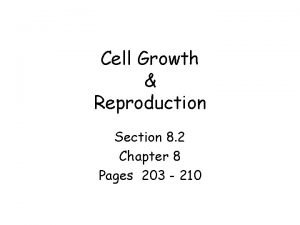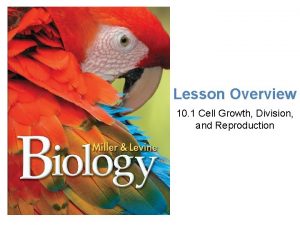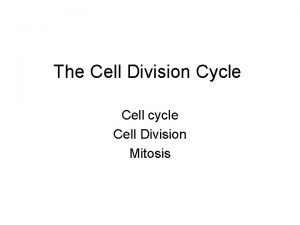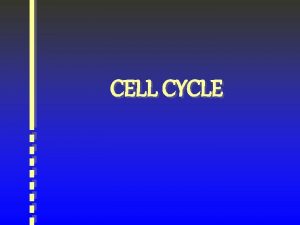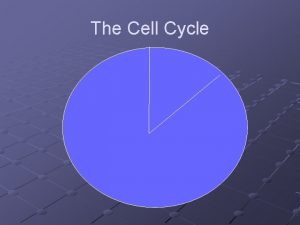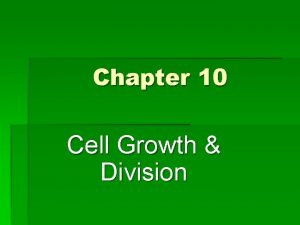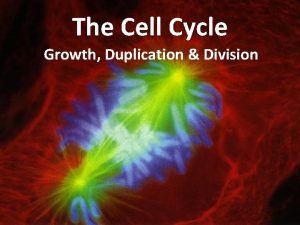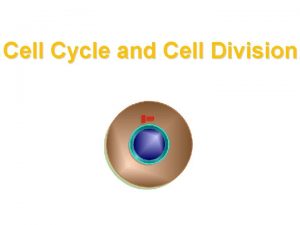Cell Growth and Division The Cell Cycle The









- Slides: 9

Cell Growth and Division

The Cell Cycle The cycle of growth, DNA synthesis, and division is essential for an organism to grow and heal. If it goes out of control, abnormal cell growth may occur, resulting in cancer cells. Aveoli in the lung Lung cancer cell

The Cell Cycle The cell cycle is the regular pattern of growth, DNA duplication, and cell division that occurs in eukaryotic cells.

Cell Cycle: Four Main Stages The four main stages of the cell cycle are: Gap 1 Synthesis Gap 2 Mitosis Scientists were limited by the microscopes of the time and named the “gaps” because they weren’t able to see activity in the cell at these times.

Gap 1 (G 1) During G 1, the cell carries out its normal functions. The cell will increase in size, and its organelles will increase in number. A cell spends most of it’s time in this stage, but the length of the stage depends on the cell type. This is the stage where the cell determines if it will undergo apoptosis, or divide.

Synthesis (S) The cell makes a copy of its nuclear DNA during this stage. By the end of this stage, the cell contains two complete sets of DNA as seen from an SEM

Gap 2 (G 2) Cells will continue to carry out their normal functions. Additional growth occurs. The cell is checked a final time for damage and adequate size before undergoing mitosis.

Mitosis (M) � Mitosis includes two processes: mitosis and cytokinesis. � Mitosis is the division of the cell nucleus and its contents. � The nuclear membrane dissolves, duplicated DNA condenses around proteins and separates, and two new nuclei form. � Cytokinesis is the process that divides the cell cytoplasm. � The result is two daughter cells that are genetically identical to the original cell.

Cells Divide At Different Rates The rate at which your cells divide is linked to your body’s need for those cells. The internal lining of your digestive track receives a lot of wear and tear. As a result, cells that line your stomach and intestine are replaced every few days. Cells that make up the smooth muscle of the intestine, the lungs, kidney, and liver, divide only occasionally in response to injury or death.



